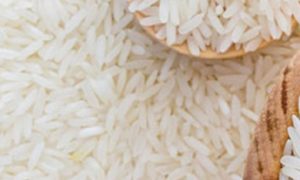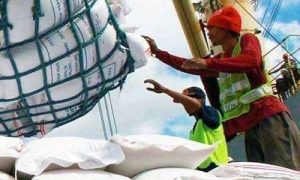Japan’s rice crisis shows the price of faulty food security policy

Japan’s rice shortage in the summer of 2024 was driven by unseasonable weather, increased demand from tourism, and household stockpiling after an earthquake warning. Despite normal rice production in 2023, a decline in high-quality rice led to reduced supply. Government policies, like production adjustments and a refusal to release stockpiles, worsened the situation.
Japan faced a rice shortage during the summer of 2024, sparking confusion among consumers as supermarket shelves emptied. While low stock levels of rice and tight supply before the October harvest are normal, several factors combined to exacerbate this crisis. Total rice production was normal in 2023, but unseasonable weather reduced the ratio of high-quality rice in overall output.
Some of the low-quality rice was eliminated in the distribution process, which decreased the overall supply. The post-COVID tourism boom simultaneously increased the demand for rice. Another factor increasing demand was households stockpiling rice after the Japan Meteorological Agency issued a warning for a major earthquake in the Nankai Trough. This warning was released in response to the Miyazaki earthquake that occurred in early August.
The increase in Japanese demand for rice contrasts with the apparent trends in its consumption. Rice consumption decreased from 118 kg per capita in 1962 to 51 kg in 2022. Since 1971, the government has introduced production adjustment policies that restrict rice production to maintain the price. This caused production to decline from 14.3 million tons in 1967 to 7.3 million tons in 2022. Shrinking the rice market through production adjustments led to disproportionately large supply disruption relative to the small external shocks mentioned above.
The experience of rice shortages due to a major harvest failure in 1993 strengthened the rice stockpiling system. Though the government has a rice stockpile of 910,000 tons, it has refused to release this reserve. The government’s rice stockpile aims to prepare for a once-in-a-decade crop failure or two consecutive years of normal crop failure — that is, for a sharp decline in production, not a sharp increase in demand.
Official announcements claim that the rice shortage will resolve itself when new rice becomes available with the coming harvest season. This inaction reflects political considerations. If rice reserves are released, the price will fall, which would be detrimental to producers. But these producers — farmers and agricultural cooperatives — are generally major supporters of the ruling Liberal Democratic Party. With the election of a new president of the party and Prime Minister of Japan at the end of September and the House of Representatives election in late October, potential policies that may alienate those groups are off the table.
Distributors and producers benefit from the high price of rice in the short term. Increased demand for new rice has driven up prices and the price of new rice on the market has increased by 30–40 per cent compared to 2023. This represents an opportunity for agricultural cooperatives, which are distributors of rice and representatives of rice producers, to further increase their profits.
But the trend of declining rice consumption will continue in the future. Rice consumption is projected to decline to 3.75 million tonnes by 2040. The high prices caused by the current rice shortage are temporary and there will be a surplus of rice again. Rice prices will return to a downward trend and political pressure to prevent this will increase further.
Getting caught up in short-term phenomena and ignoring long-term trends is a mistake. Japan’s agricultural policy has prioritised protecting producers and significantly undervalued the perspective of consumers.
The government missed an opportunity to reassure the public by fine-tuning the release of rice stockpiles. The revised May 2024 Basic Law on Food, Agriculture and Rural Areas places the highest priority on food security and calls for the improvement of domestic production and the establishment of a food supply system in the event of an emergency.
Food security is an important role for governments. It is not just about physically securing food, it is also about providing people with peace of mind. For example, in the event of an emergency, it is necessary to promise to provide food and present concrete production and distribution plans.
The lesson to be learned from the rice shortage crisis is that the disruption caused by the slight supply shortage and distribution mismatch resulted in public anxiety. The government should reflect on its failure to provide information that aligned with public concerns about food. While rice consumption is declining, it maintains its status as a staple food, particularly among the elderly.
Though it is not consumed in large quantities, it is an indispensable item in Japan. If the government had provided proper information and made it clear that existing rice stockpiles —including information that these stockpiles would be released if there was a shortage — they would have prevented much confusion.
The rice crisis has revealed deeper issues with the country’s food security policies. Japan has the opportunity to create a more resilient and transparent approach that not only ensures physical supply but also maintains public trust in times of uncertainty. Such a holistic approach would balance the interests of producers with the needs of consumers.
Source Link : https://eastasiaforum.org/2024/10/18/japans-rice-crisis-shows-the-price-of-faulty-food-security-policy/
















